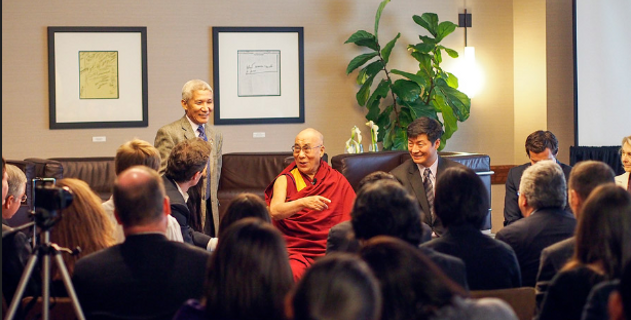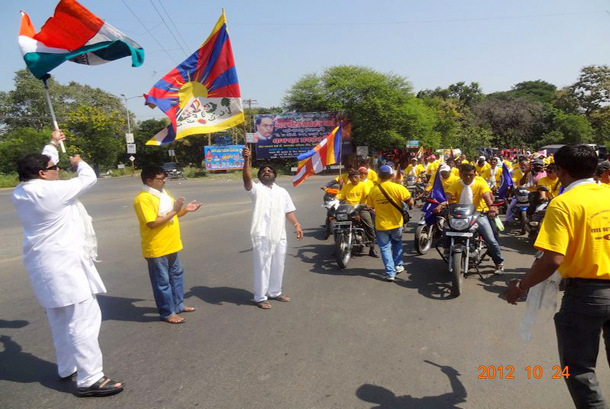BEIJING – A Tibetan artist has died
after setting himself on fire in the latest self-immolation protesting
Chinese rule, and residents are afraid to leave their homes because
large numbers of security forces are in the area, the Tibetan
government-in-exile and an activist group said Sunday.
The man set fire to himself Sunday morning in Tongren, a
monastery town in western China's Qinghai province, said the exile
government based in Dharamsala, India, and London-based Free Tibet.
A photo on the exile government's website showed a burned body wrapped in traditional orange scarves and surrounded by monks.
Free Tibet identified the dead person as Dorje Lungdup,
25, a father of two children and an artist of traditional Thangka
religious paintings. It said thousands of people reportedly gathered to
say prayers for him, and that people decided to cremate his body soon
after to prevent authorities from interfering.
A representative of Dorje Lungdup's family told the
crowd that he set fire to himself to call for the return of exiled
Tibetan spiritual leader the Dalai Lama and begged them not to protest
for the sake of their own safety, Free Tibet said.
Dozens of ethnic Tibetans have set themselves on fire
in heavily Tibetan regions since March 2011 to protest what activists
say is Beijing's heavy-handed rule in the region. Many have called for
the return of the Dalai Lama.
Free Tibet said residents of Tongren were afraid to
leave their homes because of large numbers of security forces on the
streets and restrictions on movement. It said the Internet and mobile
communications were being interrupted to prevent the spread of
information.
A man at the Tongren county government said he couldn't hear clearly and
asked The Associated Press to call back. Calls then rang unanswered, as
did calls to police.


 DHARAMSHALA:
The Central Tibetan Administration is deeply saddened to learn of fresh
reports coming out of Tibet that one more Tibetan has set self on fire,
bringing the total known self-immolations to 63.
DHARAMSHALA:
The Central Tibetan Administration is deeply saddened to learn of fresh
reports coming out of Tibet that one more Tibetan has set self on fire,
bringing the total known self-immolations to 63.



 DHARAMSHALA, November 4: In photos and confirmed reports coming out of
Tibet, another Tibetan set himself on fire this morning in an apparent
protest against China's continued occupation of Tibet.
DHARAMSHALA, November 4: In photos and confirmed reports coming out of
Tibet, another Tibetan set himself on fire this morning in an apparent
protest against China's continued occupation of Tibet.
